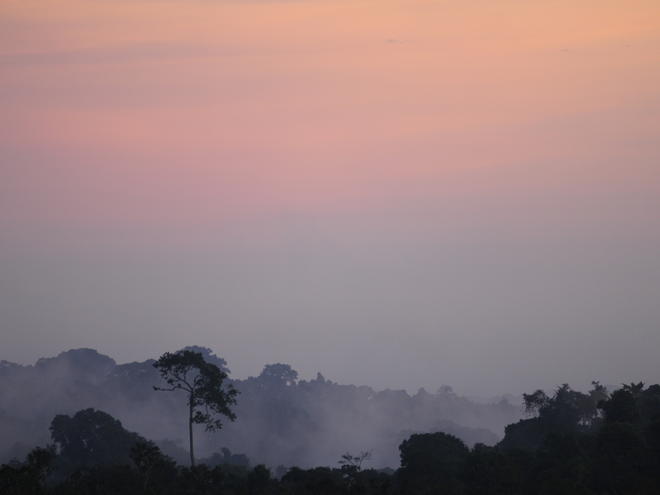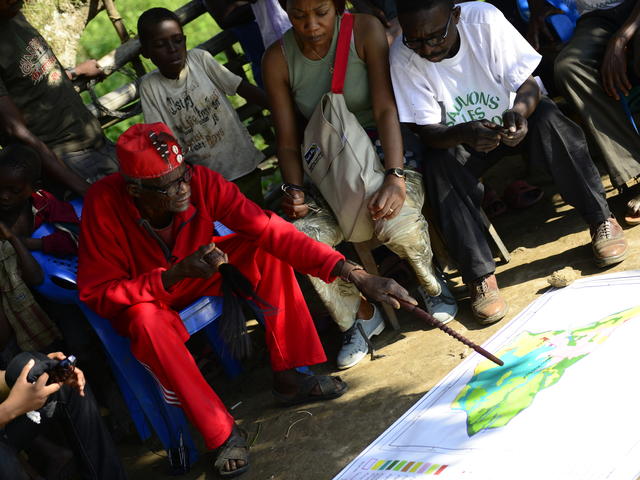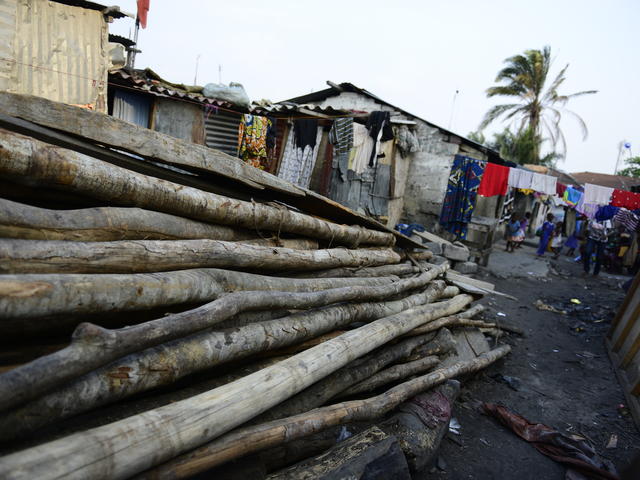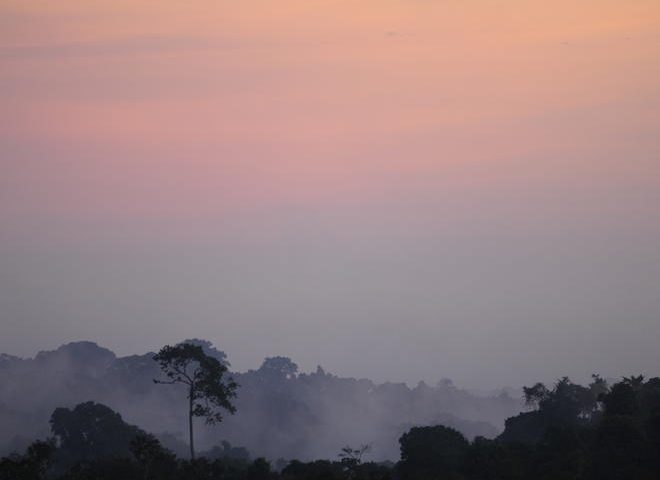“Elengi mingi,” says Ngwabango in her native Lingala as she pushes a heaping plate of black caterpillars smothered in groundnut sauce in my direction. It means “very tasty.”
I add some pili pili, local hot sauce, to the caterpillars and take a bite. I immediately know why this dish is a local favorite. The caterpillars are, indeed, very tasty. They also are an important source of protein for Ngwabango and others who live in Maï-Ndombe province, a 30 million acre landscape of forests and savannah located in Africa’s Democratic Republic of Congo (DRC).

The caterpillars come from these forests, as do other foods, medicines, and wood for cooking. That is why the land has been used communally by her village for as long as Ngwabango can remember.
But, now, the forests are shrinking and degrading—mainly due to overharvesting wood for fuel, as well as converting forests to agricultural land to meet the demands of an increasing population in the DRC’s capital. Ngwabango has experienced these threats first hand. She tells me she has to travel longer to harvest fuelwood. And it is harder to find the prized caterpillars, as their numbers have declined.
She was eager, therefore, to meet with DRC government representatives, WWF, and others earlier this year to discuss plans for a forest conservation program in Maï-Ndombe, which USAID’s CARPE program has set the foundation for creating. She liked the idea of addressing the threats to the forest but feared that doing so would limit her access to the forests. The meeting opened the door for dialogue between local communities and the government regarding a shared idea of sustainable development and forest management in the region, giving Ngwabango the opportunity to express her views on the topic.
 © WWF-US / Julie Pudlowski
© WWF-US / Julie Pudlowski © WWF-US / Julie Pudlowski
© WWF-US / Julie PudlowskiBased on input from Ngwabango and locals who attended this and other community meetings, the government moved forward with creating the program. It is now internationally recognized as part of a collective commitment, REDD+, to reduce emissions from deforestation and forest degradation. The program, which was conditionally approved by the World Bank’s Carbon Fund in June—and which WWF hopes to expand to the national level in the DRC—has the potential to significantly reduce emissions while conserving the forests and alleviating poverty.
WWF was instrumental in ensuring that Ngwabango and people from throughout Maï-Ndombe were included in the process of creating the program. Ngwabango, for example, participated in the mapping of her community’s land. This was supported with funding to WWF from USAID’s CARPE program, while work to implement the new forest conservation program will be supported by the Norwegian-based development agency, Norad.
Thanks to initiatives like this, the forests that Ngwabango and others depend on will be saved. And they will be able to enjoy the tasty caterpillars—as will I, next time I am there.
I, too, now have a great example of the importance of REDD+ as a tool for conserving the world’s forests and the importance of including the voices of local people—particularly those of women—in the REDD+ process. I am hopeful that this will inspire others in the DRC and worldwide to follow in Maï-Ndombe’s footsteps.
Enviroshop is maintained by dedicated NetSys Interactive Inc. owners & employees who generously contribute their time to maintenance & editing, web design, custom programming, & website hosting for Enviroshop.
